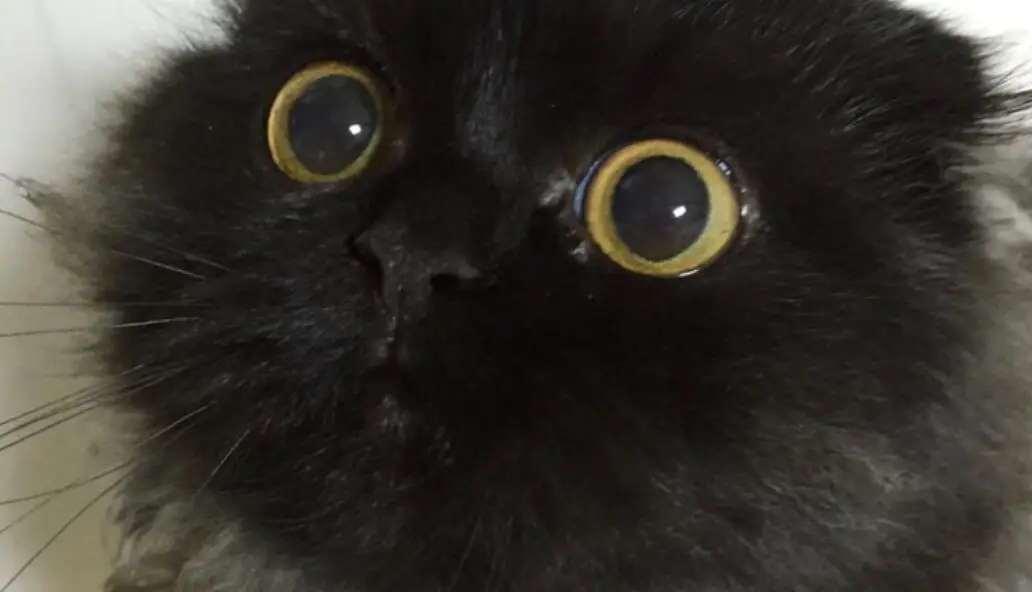The nose is running, the eyes are watering and an uncomfortable scratching spreads in the throat. Much like humans, cats can also suffer from these symptoms. Often it is cat flu. What to do? We give tips!
Not every cat with a mild runny nose needs to go to the vet immediately. But there are exceptions: for example kittens, i.e. all cats up to one year of age. For them, cat flu is a serious disease. Even old or immunocompromised velvet paws should be seen by the doctor as soon as possible when you notice the first signs.
If your adult sniffling nose looks slack and has yellowish discharge from the nose or sore eyes, you should also see them to the vet. Because treated early, cat flu can usually be dealt with in an uncomplicated manner.
Acute and Chronic Cat Flu

Acute cat flu will heal completely within a few weeks. In young cats, immunodeficient or unvaccinated animals, however, it can become chronic. We are talking about chronic cat flu if it lasts more than four weeks. Then the disease is usually more difficult to treat and is often associated with inflammation of the eyes and other complications. By the way: A preventive vaccination is better than any cat flu treatment. Although this does not protect 100 percent, it does ensure a milder course.
Cat Flu Medication
After a thorough examination, the vet will give you medication to get your cat back on its paws quickly. In the case of cat flu, we speak of a “complex disease” because various viruses and, secondarily, bacteria can be behind it. The symptoms and the respective treatment vary accordingly. Your vet will suggest a treatment that is individually tailored to your animal. Many veterinarians do without a swab examination to determine the pathogen, as this is expensive.
Amoxicillin and other antibiotics
Although viruses cause cat flu, vets usually get rid of it with antibiotics. Because bacteria weaken the virus-weakened body in many cases. A sign of bacteria is a yellow-greenish discharge. A broad-spectrum antibiotic for cats is effective at fighting these bacteria. The active ingredient amoxicillin, semi-synthetic penicillin, has proven particularly effective. If used correctly, it quickly eliminates the streptococci, staphylococci, and Pasteurella commonly found in sick cats. Important for the treatment of cat flu with antibiotics: It is essential that you adhere to the duration of intake and the intervals between two ingestions!
Cortisone, Ointments, etc
Depending on the symptoms, the vet will offer further therapies. The possibilities are diverse: Expectorant drugs can make breathing easier or clear the nose. This often brings back the little patient’s appetite. Immune-boosting agents help the cat to regain its strength soon.
Interferon or cortisone supports the immune system in fighting viruses. Tip: After a cortisone dose, especially in older animals, keep an eye on the blood sugar levels over the next few months. If the eyes are inflamed and crusted, the vet will recommend eye ointments. Let the vet show you the first dose and calmly but consistently continue the treatment at home. If the cat is dehydrated, IV fluids will restore its strength.
Cost and duration of the treatment
The cost depends on how early cat flu treatment starts. The more complications there are in the cat in the form of eye infections, loss of appetite, or fever, the more expensive it can become. A cat flu that is treated quickly heals completely within ten days to three weeks. For a duration of four weeks, we speak of chronic cat flu, which can accompany the cat for years.
Treating Cat Flu Yourself?
Would you like to supplement the treatment by the vet or does your cat has only mild symptoms such as clear nasal discharge or an occasional sneeze? Then we recommend the following for a speedy recovery:
Strengthen the immune system with homeopathy
Animal health practitioners can advise on any homeopathic treatment for your cat. Coordinated globules should serve to strengthen the immune system. However, the veterinarian remains the first point of contact. Homeopathy can at best have a preventive or supportive effect on cat flu.
Treating cat flu naturally: home remedies & tips
The best home remedy for cat flu is free: lots of rest! Treat your animal companion to a warm place and avoid the hustle and bustle. Make sure your cat drinks and eats enough. Tip: Warm up the cat food or pour lukewarm – salt-free – chicken broth over it. It smells stronger, which encourages you to eat. An over-the-counter immune tonic stimulates the cat to eat and provides them with vitamins and minerals.
L-lysine, which was previously recommended to strengthen the immune system, is ineffective according to recent studies. If you have a trusting relationship with your cat, it is possible to inhale saltwater. If she gets upset, stop trying: Gentle care is more important! Also, gently cleanse your plush patient’s eyes and nose if he allows it.
Quickly Fit Again Despite Cat Flu
The following applies to cat flu: the earlier you take action against it together with your cat, the faster you will get rid of the nagging viruses and accompanying bacteria. With the right treatment, cat flu can be quickly conquered and rarely life-threatening. We wish your animal companion a speedy recovery!

